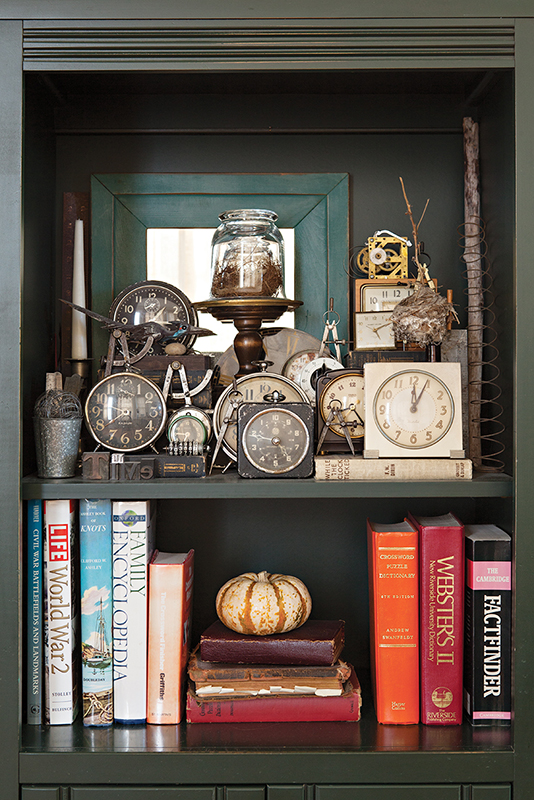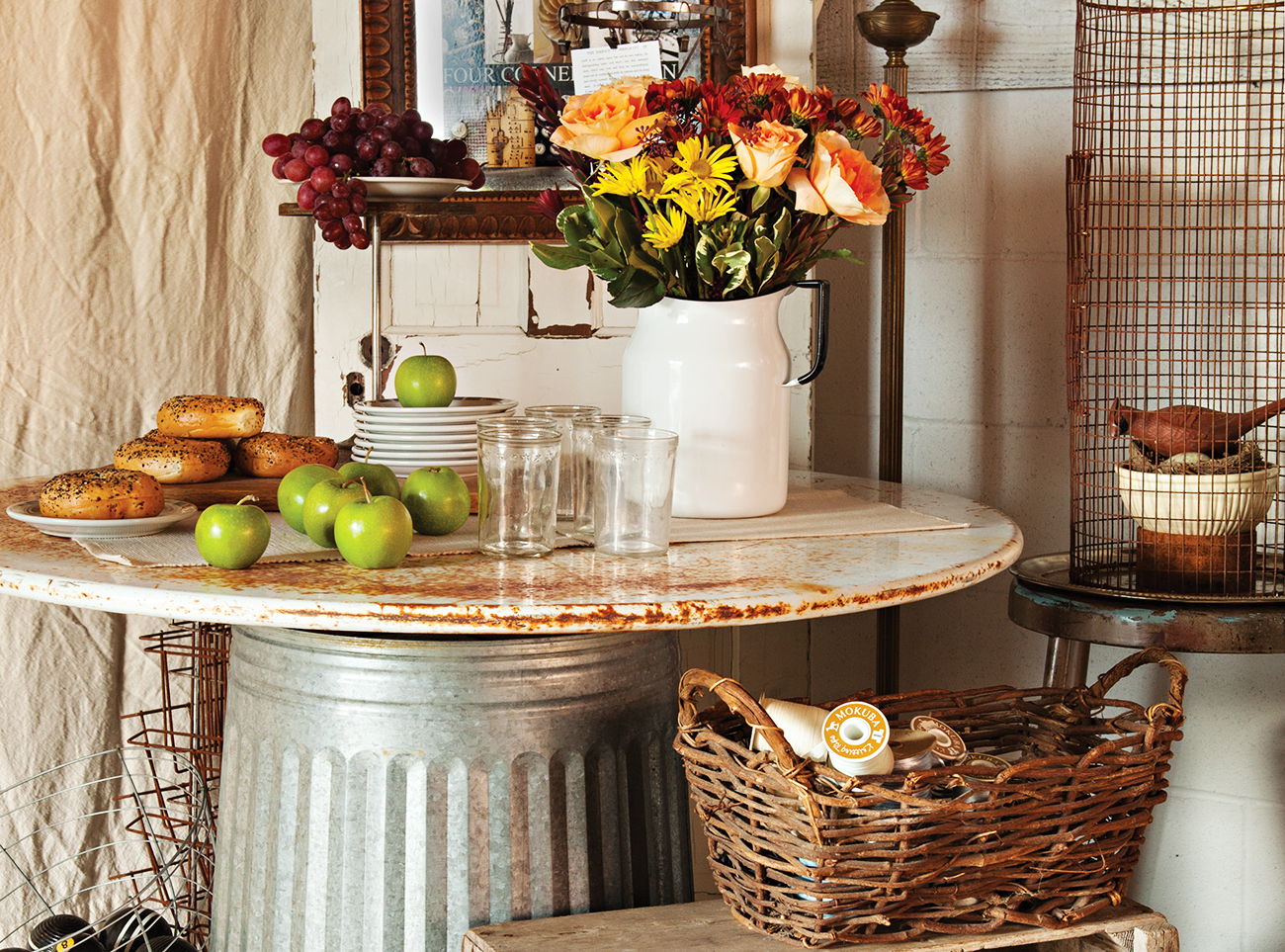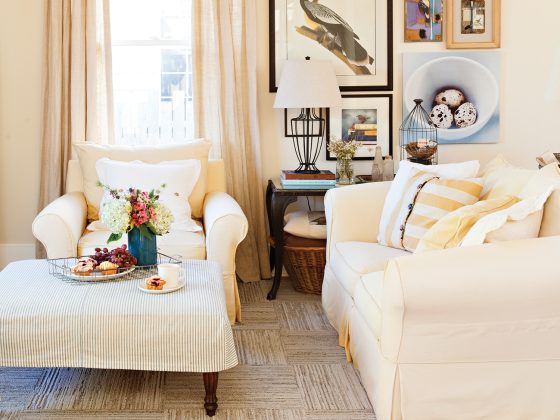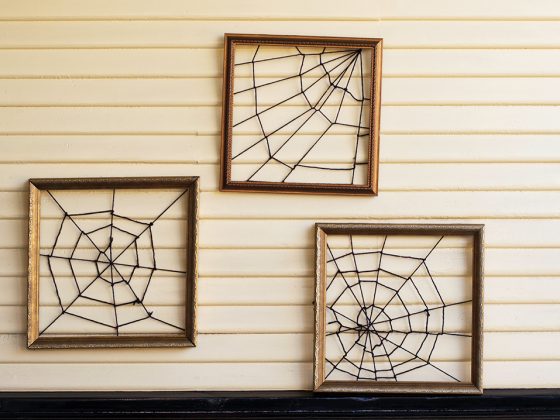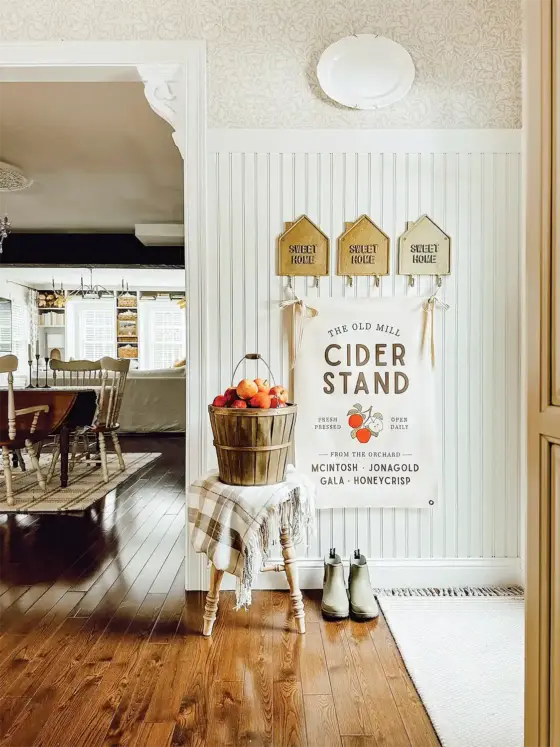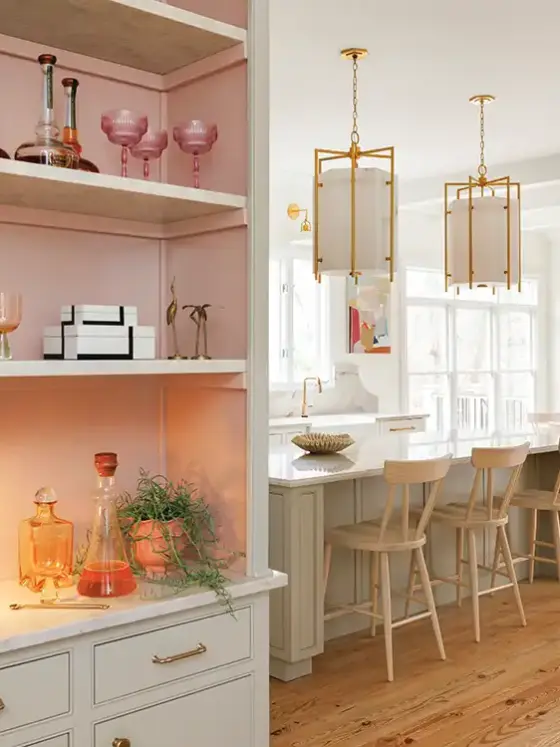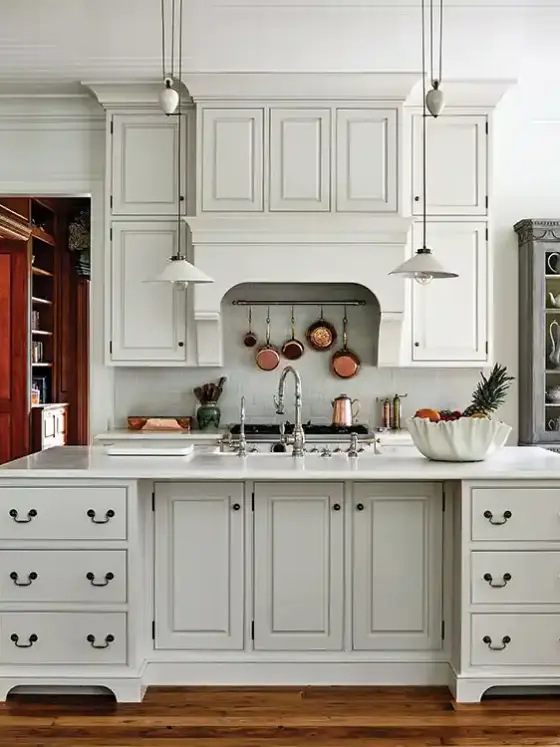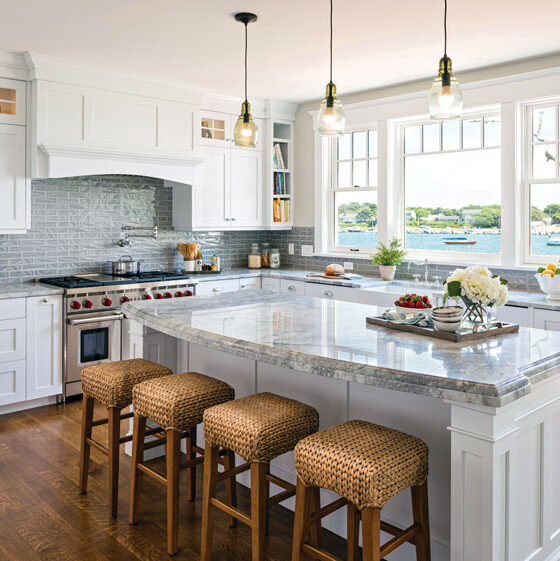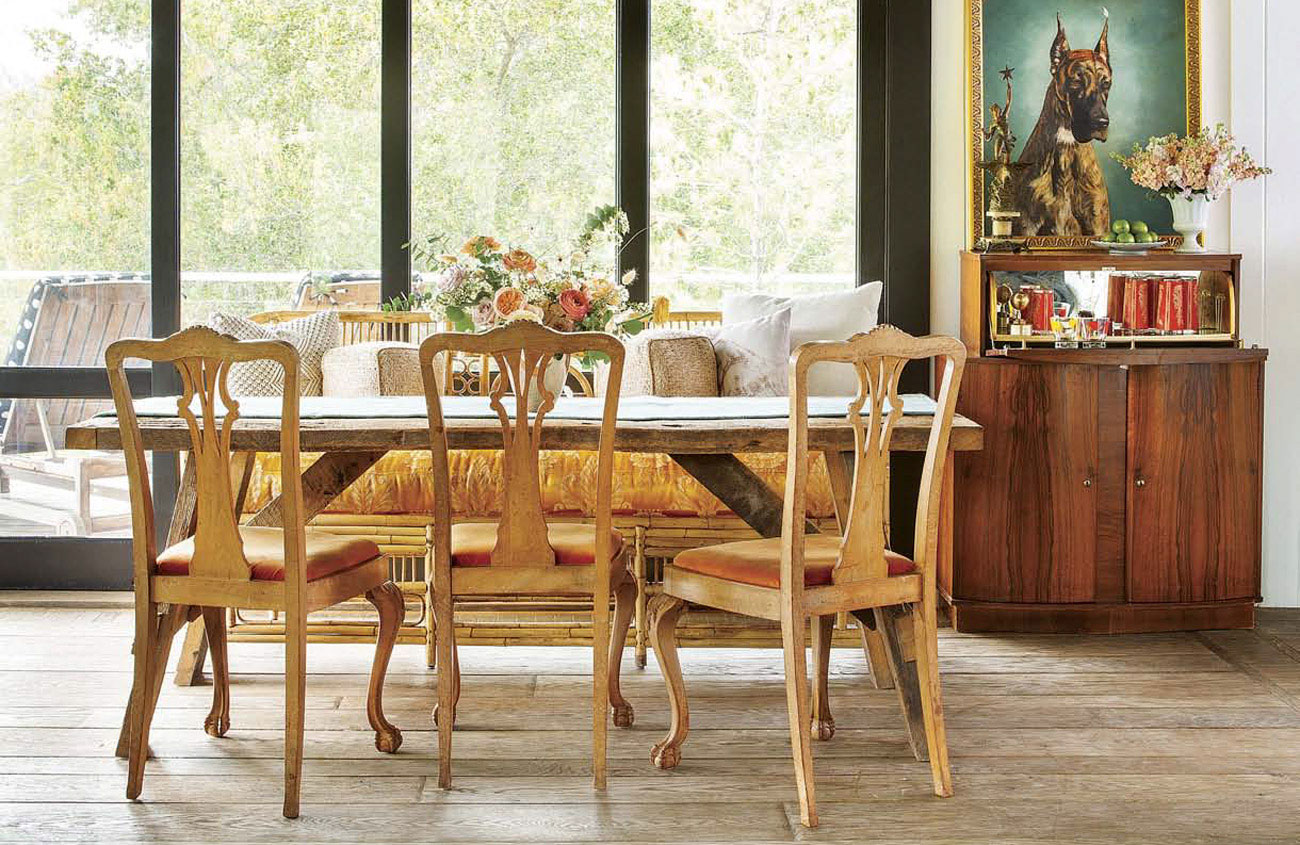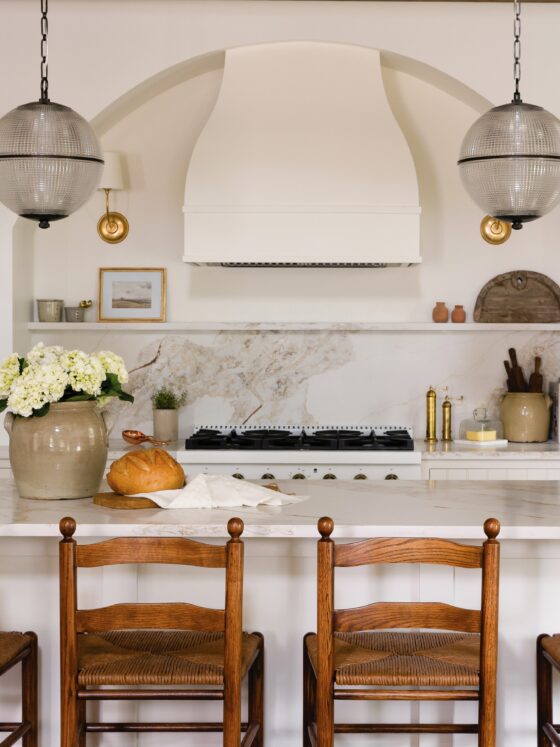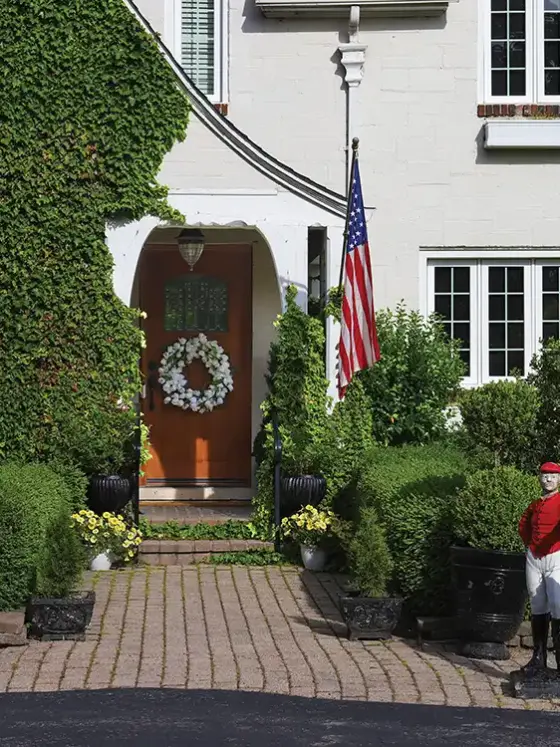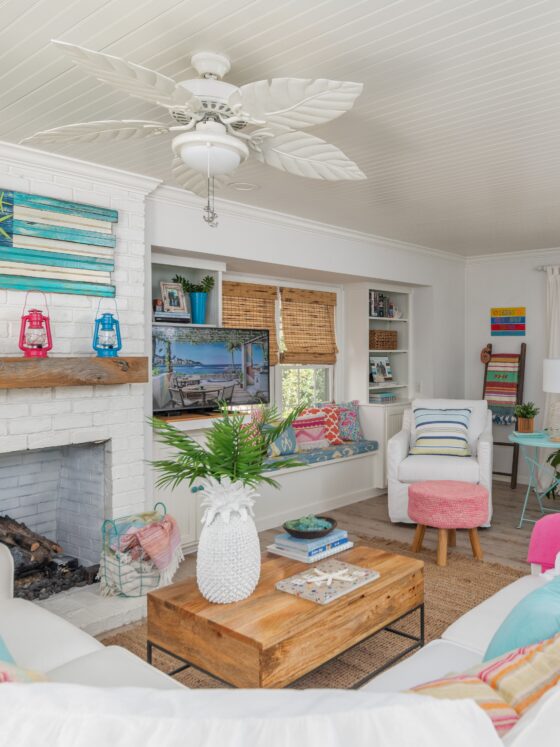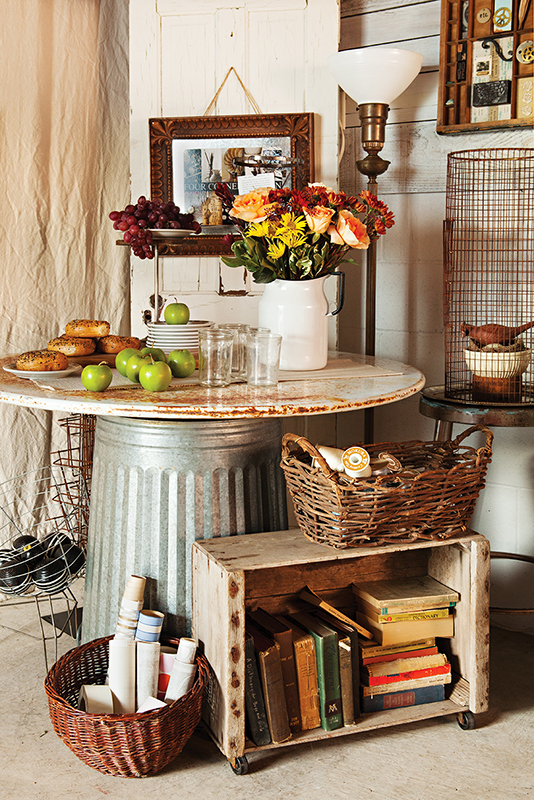
1. Change your scenery.
I like switching things up at home to reflect the seasons. I’m not talking about anything complicated, but a little change of scenery enlivens your home, gives it your unique touch and doesn’t have to cost a cent. Using what you have in ways you may not have considered is just a matter of learning to look at things with a discerning eye.
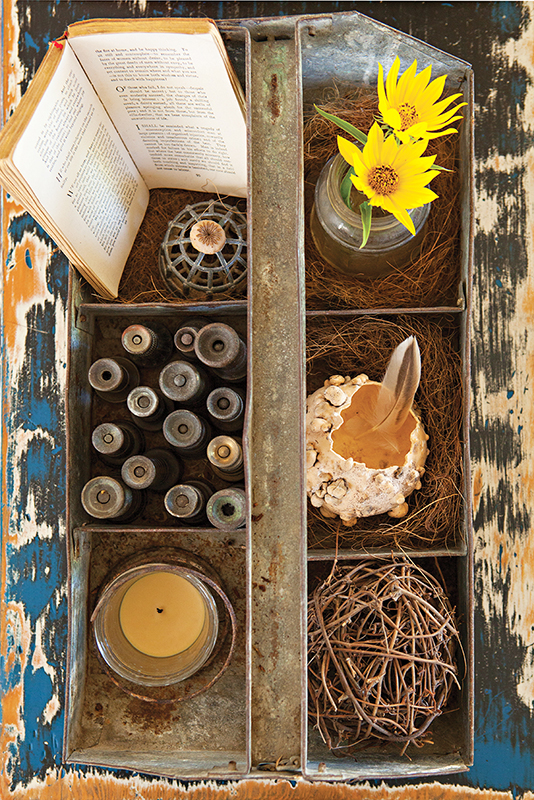
2. Work in odd numbers.
Things can be orderly, but the odd number breaks it up so nothing seems staid. There’s also strength in numbers; two thimbles are insignificant, an entire bowl full is eye-catching.
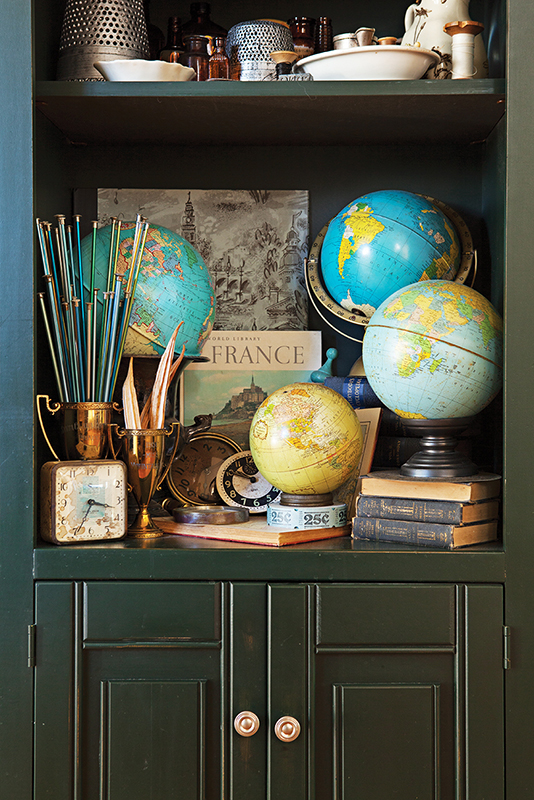
3. Repeat a complementary color.
Throughout my home, there’s a pop of ochre yellow or a bit of burnt orange. It complements the blue and green tones prevalent in most of the rooms without being flashy. It draws your eye in and keeps your interest in a vignette.
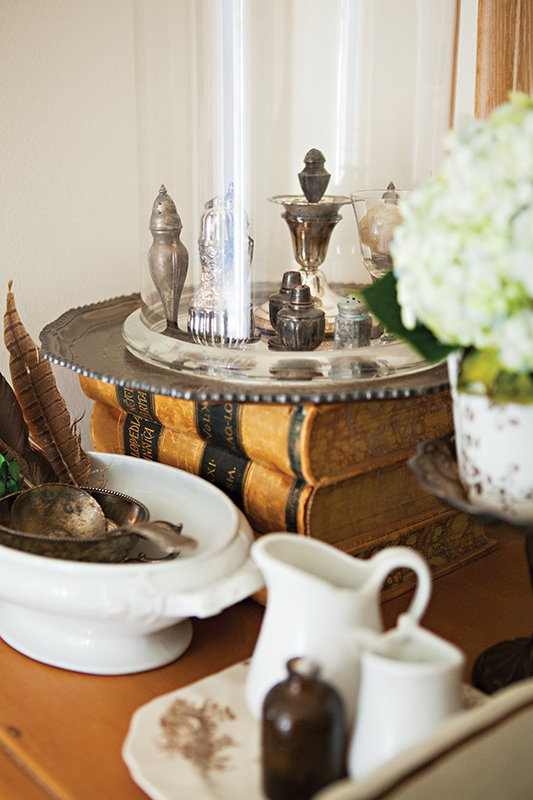
4. Look to nature for inspiration.
In your yard, at the city park, on a daily walk, there is plenty to be found—free for the taking. The gourds came from the garden as well as the dried poppy stems. I picked up a fallen branch with a few leaves still attached in the yard, and I found feathers while walking the dog. Keep your arrangements simple; let the beauty of nature speak for itself.
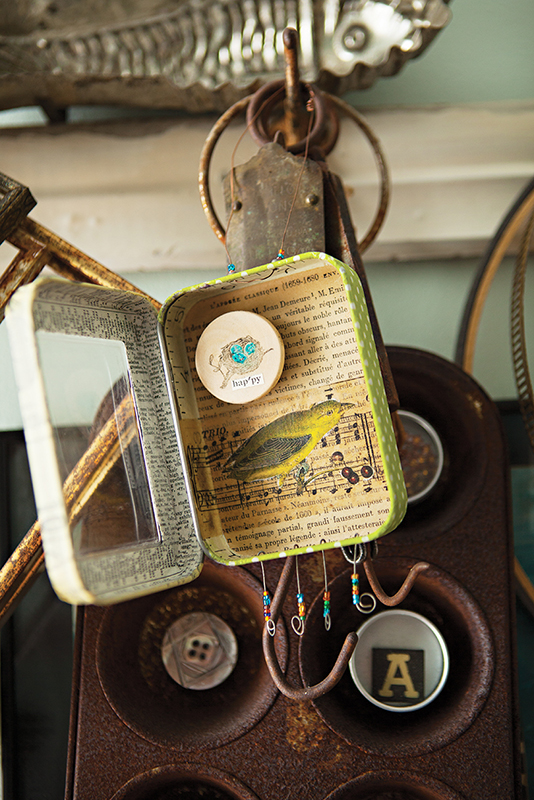
5. Expand the possibilities.
When you look at a vintage item, consider how you can repurpose or upcycle it. An old brass doorknob becomes the stopper on an apothecary jar; a metal clock face becomes a coaster for a candle.
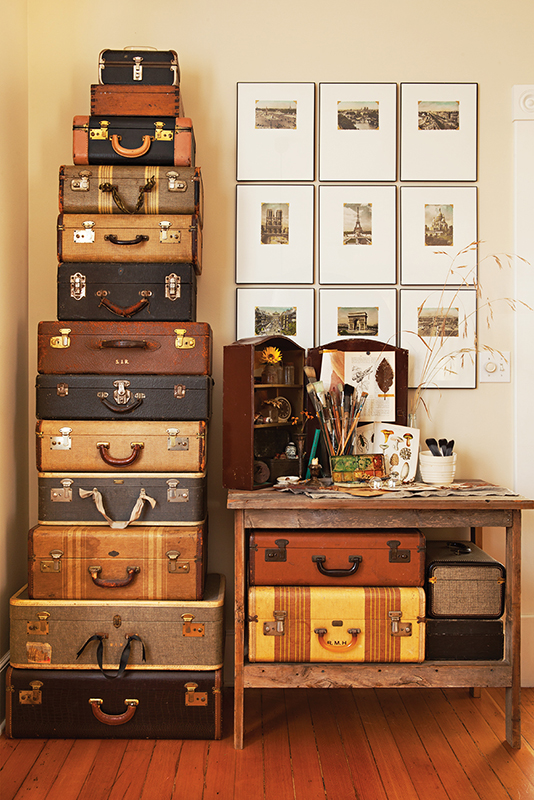
6. Layer it on.
Start with a theme and build on it, layer by layer. Some of the themes I have in my house are the large tower of suitcases and the framed Paris postcards in the dining room that suggest travel and the typewriter on top of an oversized dictionary that gives the sense of reminiscing about a past adventure. Vintage wooden type and an assortment of pen nibs that fill two glass vases are literary elements.
